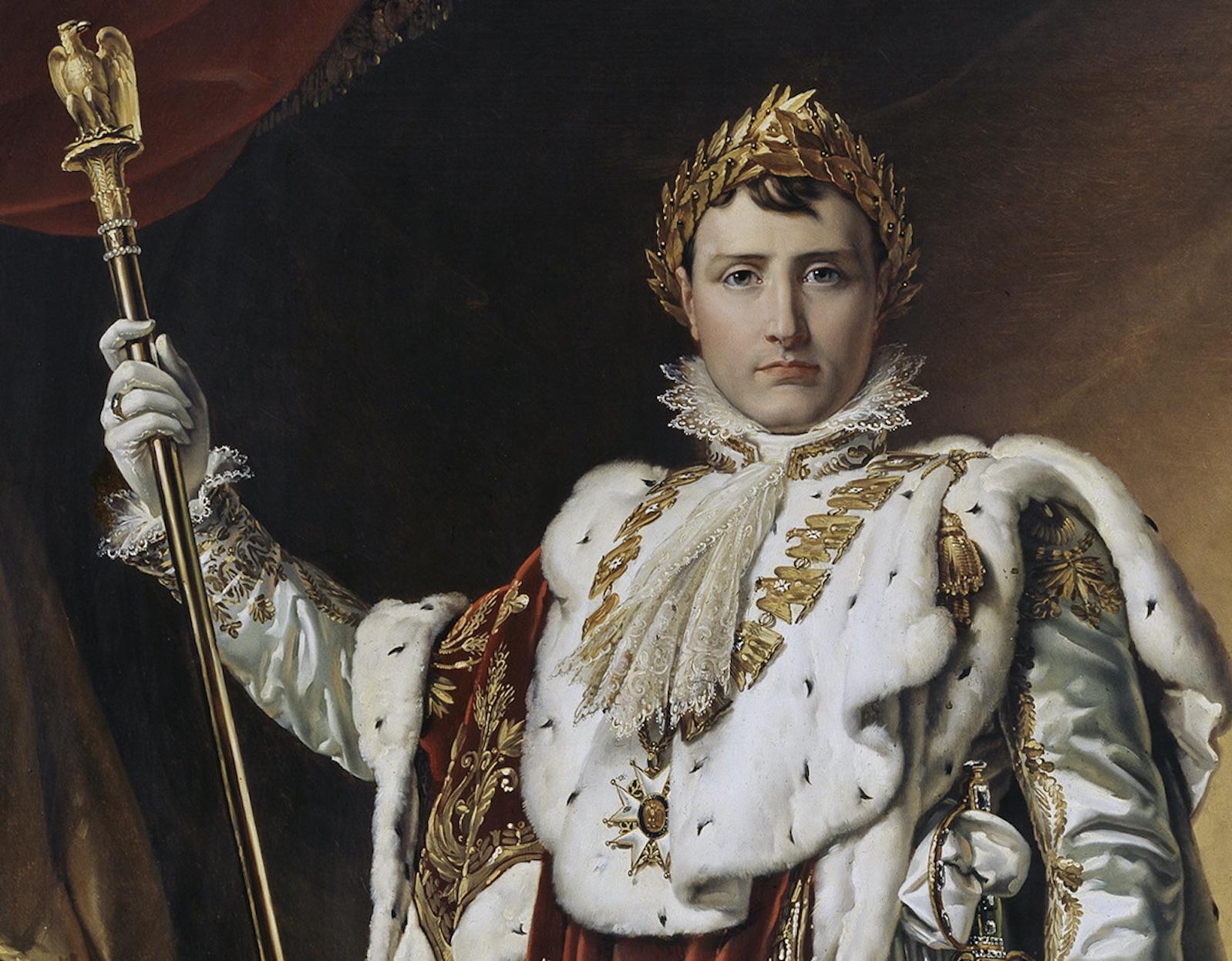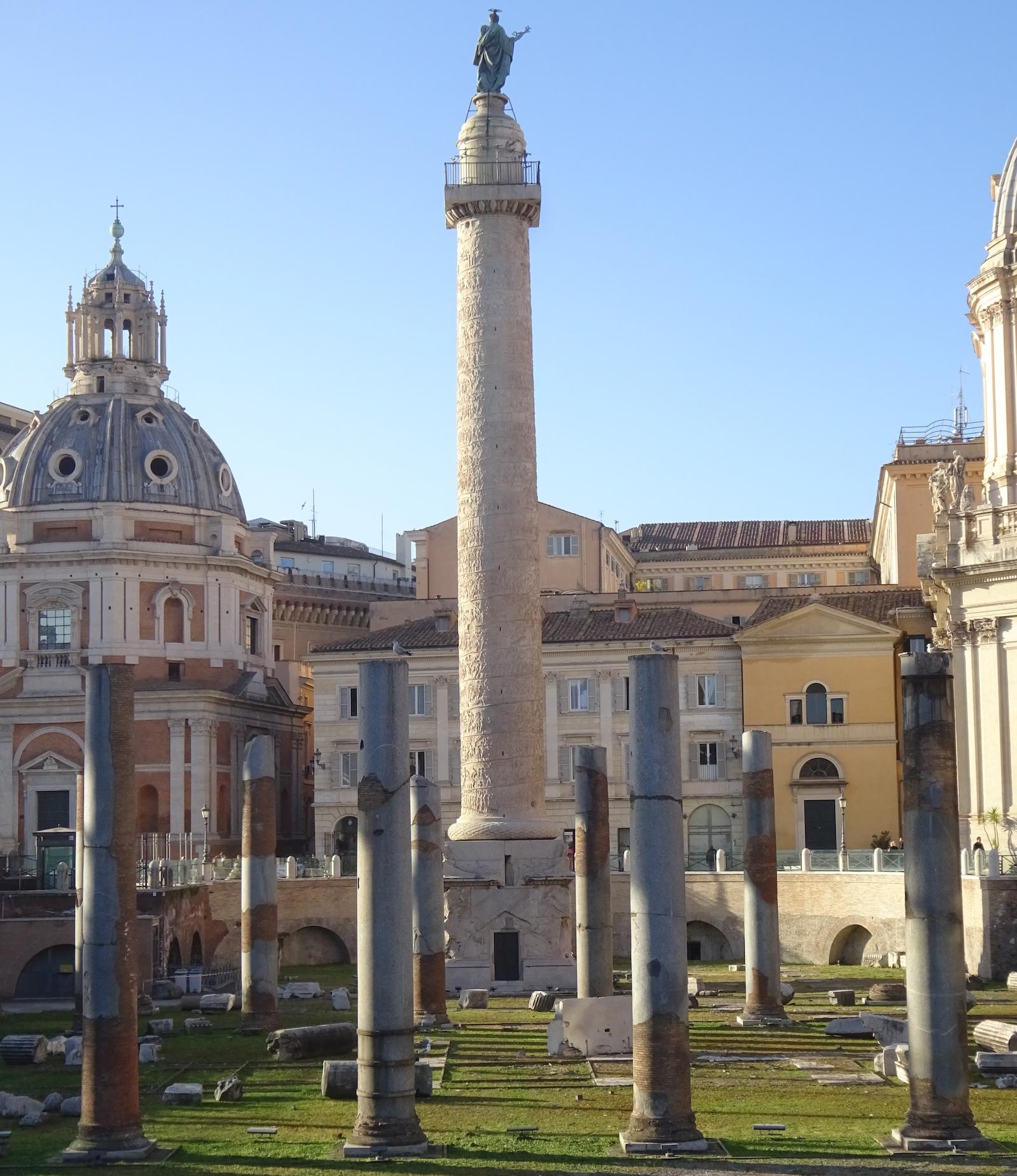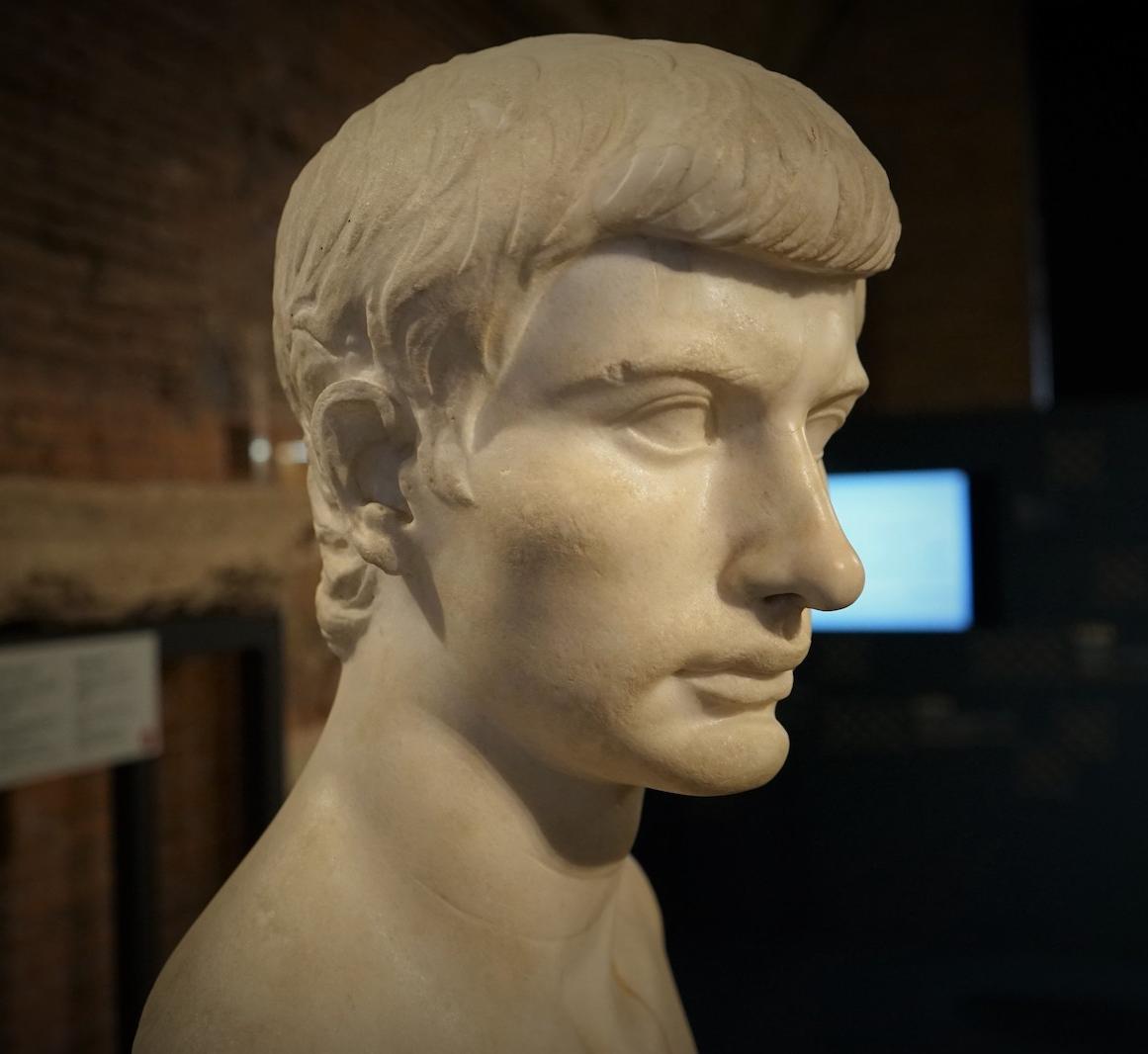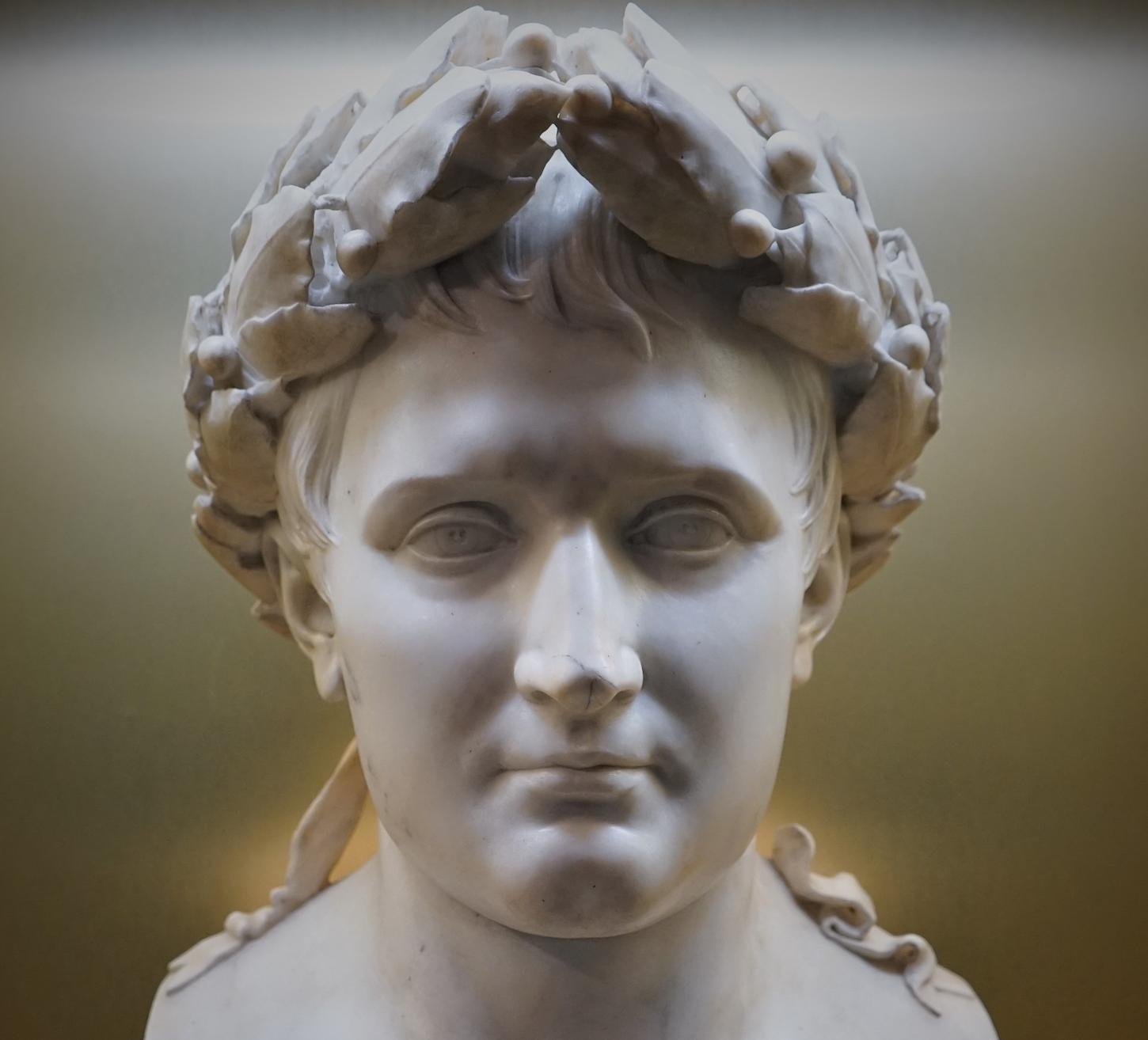This episode in Rome’s history is the subject of a new exhibition in the city—Napoleon and the Myth of Rome (curated by Claudio Parisi Presicce, Massimiliano Munzi, Simone Pastor, and Nicoletta Bernacchio). The exhibition explores both the links that were made between Napoleon and Ancient Rome, as well as the impact of the French occupation on archaeology in the city.
The reason for putting on this exhibition now is that May 5, 2021, is the 200th anniversary of the death of Napoleon. That it is held in the Markets of Trajan and Museum of Imperial Forums is particularly fitting because of the important excavations around the adjacent column of Emperor Trajan, carried out by the French (and later Papal) authorities between 1811 and 1815.
Efforts to link French politics to those of ancient Rome existed before Napoleon came to power. With the overthrow of the Bourbon monarchy in the French Revolution, parallels were drawn between the new Republic and the ancient Roman republic (as had also happened in the American Revolution a decade earlier). In particular, the figures of Marcus Brutus – assassin of the dictator Julius Caesar – and his ancestor Lucius Brutus – who had expelled the last of Rome’s kings – were held up as Republican heroes. They are represented in the exhibition by an ancient marble bust which, in the eighteenth century, was believed to be of Marcus and a reproduction of Jacques-Louis David’s 1789 painting of Lucius.




























![DEl Kathryn Barton [Australian b. 1972] the more than human love , 2025 Acrylic on French linen 78 3/4 x 137 3/4 inches 200 x 350 cm Framed dimensions: 79 7/8 x 139 inches 203 x 353 cm](/sites/default/files/styles/image_5_column/public/ab15211bartonthe-more-human-lovelg.jpg?itok=wW_Qrve3)


